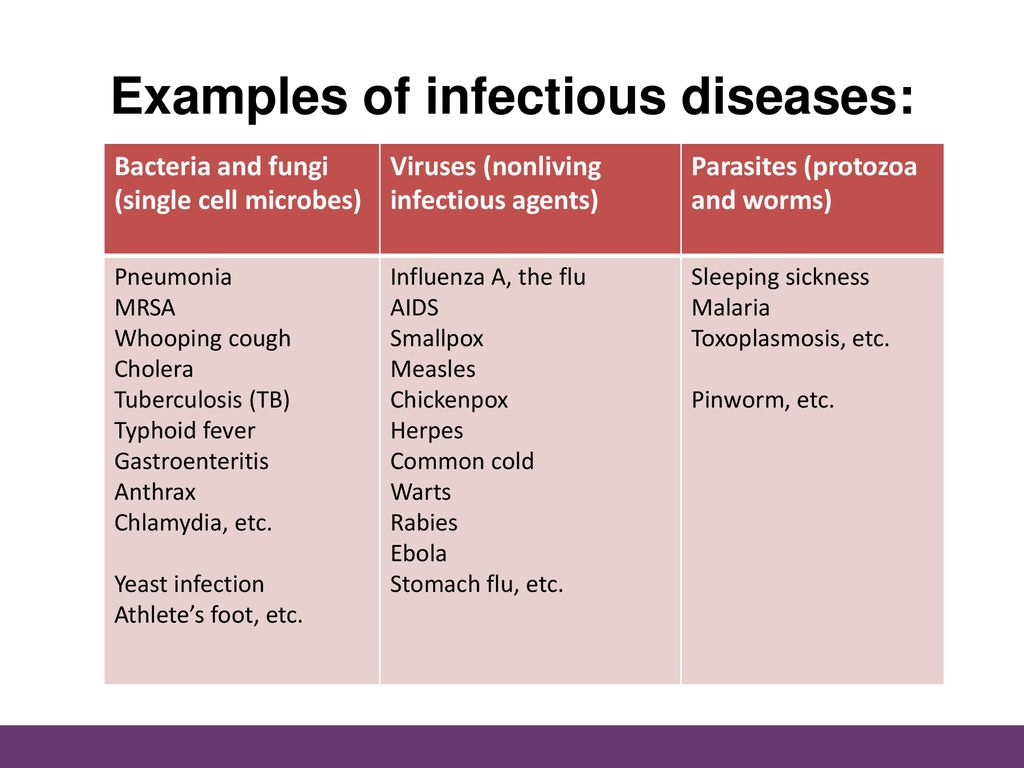Food for Yeast Infection Prevention: 10 Foods That Prevent Yeast Infections
What are the foods that can help prevent yeast infections? How can these foods stop the growth of Candida and treat fungal infections? Find out the top 10 foods that fight yeast infections.
The Role of Candida Albicans in Yeast Infections
Candida albicans, a type of yeast, is a natural part of the human microbiota. It lives on your skin and within your gut without causing any harm. This commensal organism actually helps your body perform certain key functions better. However, overgrowth of this fungus can disrupt the healthy flora, taking the form of a fungal infection. In fact, C. albicans is the most common source of fungal infections in human beings.
It can cause superficial mucosal candidiasis, such as oral thrush and vaginal yeast infections, or enter the bloodstream and travel to different organs in the body such as the kidneys, liver, spleen, lungs, brain, and heart valves, causing infection and even leading to death. People with compromised immunity, such as those with HIV, are at a greater risk of the latter.

Evidence suggests that such infections usually start with fungal overgrowth inside the patient’s gut, which then spreads to various other sites in the body. The best way to manage these fungal infections and keeping them from turning fatal is by preventing them from occurring in the first place.
How Diet Can Help Prevent Yeast Infections
Diet can play a major role in keeping the yeast population within your mouth and gut in check. Certain foods have the fungicidal activity that can help you control and prevent fungal overgrowth, some of which might even be effective against fluconazole (antifungal drug)-resistant Candida.
10 Foods That Prevent Yeast Infections
1. Cranberry Juice
For any microbe to infect any part of your body, it will first have to find a suitable place to stick itself to. Then, it will replicate, forming a biofilm across the surface, and cause an infection. Biofilm formation has been associated with increased resistance of the fungi against antifungal drugs.
It has been shown that cranberry extracts inhibit the growth of candida species and contain proanthocyanidins that do not allow these pathogens to stick to any surface due to their anti-adhesive nature. Research suggests that consuming this fruit can help curb the rapid proliferation of these fungal microbes in your mouth and urinary tract to prevent an infection.

2. Coconut and Olive Oils
Research has focused its attention on the effects of the kind of fats you eat on the colonization of yeast within your gut. Two edible oils that seem to possess antifungal properties that may help prevent candida infections are coconut and olive oil, largely due to their fatty acid profile.
It is suggested that the lauric acid in coconut oil can help alter the functioning of yeast cells to prevent them from overgrowing and forming a fungal biofilm that causes an infection. These findings are primarily based on animal studies and need to be replicated in larger human trials, but researchers are hopeful that upping the dietary intake of coconut oil will benefit humans in the same way.
Furthermore, consuming both coconut oil and olive oil may even be useful in controlling the growth of yeasts that are resistant to the standard antifungal drug fluconazole.
3. Probiotics
With the rise of drug-resistant fungi, more sustainable preventive measures are required today, and probiotics are a step in that direction.

Fermented foods such as pickles, kimchi, sauerkraut, buttermilk, yogurt, cheese, kefir, and sour cream are some of the best dietary sources of probiotics. Studies show that including these probiotic-rich foods in your diet can help reduce the severity and duration of yeast infections.
The mechanism behind this is simple: probiotics are beneficial bacteria that help keep the harmful microbes under control to maintain a healthy gut flora. By that logic, they can help inhibit the fungal overgrowth within your gut that paves the way for yeast infections. In fact, probiotics have been proposed as an effective, easy-to-use, and well-tolerated alternative treatment for candida infections.
The anti-candida activities of probiotics such as lactobacillus and acidophilus on oral candidiasis have been attributed to the facts that probiotics regulate the pH of the environment, produce hydrogen peroxide, release high amounts of lactic acid, and curb the growth of infective biofilms.
Research also favors using prebiotics along with probiotics as the former enhance the activity of the latter to provide greater protection against yeast infections.
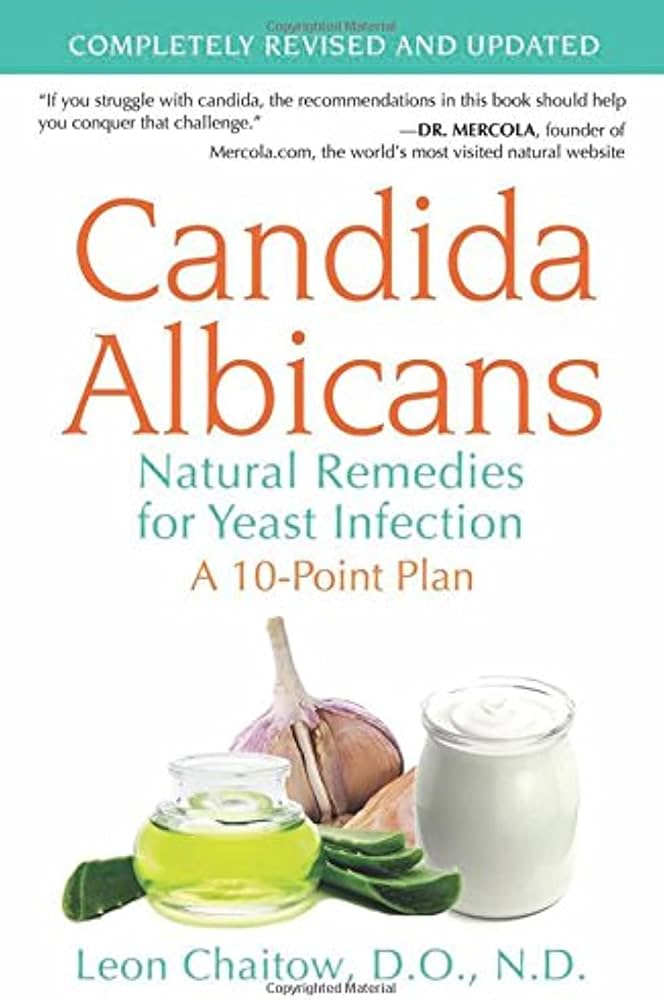
4. Garlic
As mentioned above, C. albicans first attaches itself to a suitable surface and then multiplies rapidly to form a biofilm, which becomes the source of a yeast infection. But how do these pathogens multiply? Like every other living thing on this planet, fungi are also made of cells. These cells produce macromolecules, such as proteins, important fats, and nucleic acids, within
10 Foods That Prevent Yeast Infections
In this article:
Candida albicans, a type of yeast, is a natural part of the human microbiota. It lives on your skin and within your gut without causing any harm. This commensal organism actually helps your body perform certain key functions better.
Advertisements
But overgrowth of this fungus can disrupt the healthy flora, taking the form of a fungal infection. In fact, C. albicans is the most common source of fungal infections in human beings.
It can cause superficial mucosal candidiasis, such as oral thrush and vaginal yeast infections, or enter the bloodstream and travel to different organs in the body such as the kidneys, liver, spleen, lungs, brain, and heart valves, causing infection and even leading to death. People with compromised immunity, such as those with HIV, are at a greater risk of the latter.
Evidence suggests that such infections usually start with fungal overgrowth inside the patient’s gut, which then spreads to various other sites in the body.
Advertisements
The best way to manage these fungal infections and keeping them from turning fatal is by preventing them from occurring in the first place. Diet can play a major role in keeping the yeast population within your mouth and gut in check.
Foods That Fight Yeast Infections
The following are food items with the fungicidal activity that can help you control and prevent fungal overgrowth, some of which might even be effective against fluconazole (antifungal drug)-resistant Candida. (1)
1. Cranberry juice
For any microbe to infect any part of your body, it will first have to find a suitable place to stick itself to. Then, it will replicate, forming a biofilm across the surface, and cause an infection. (2) Biofilm formation has been associated with increased resistance of the fungi against antifungal drugs.
It has been shown that cranberry extracts inhibit the growth of candida species and contain proanthocyanidins that do not allow these pathogens to stick to any surface due to their anti-adhesive nature.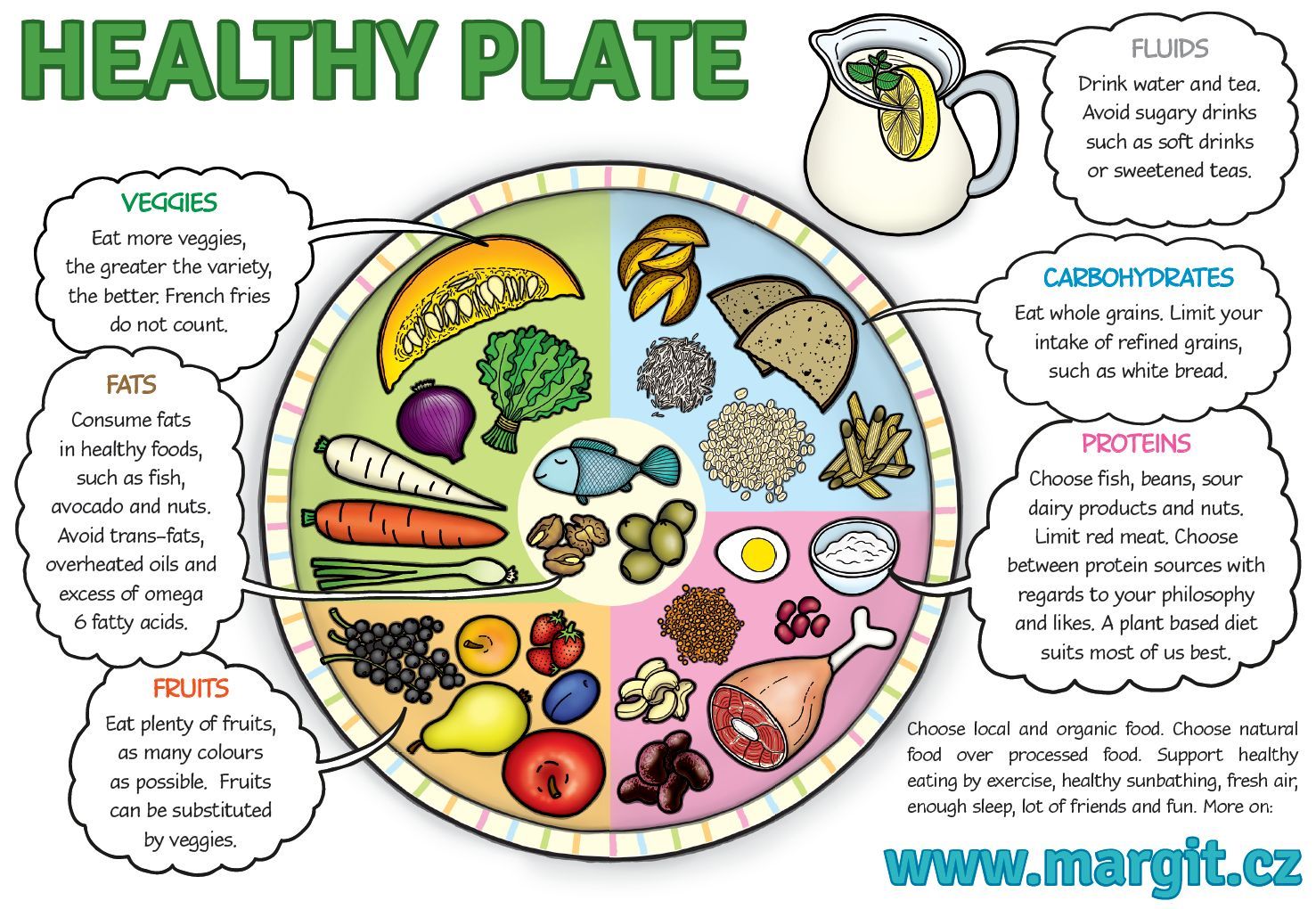 (3)
(3)
Research suggests that consuming this fruit can help curb the rapid proliferation of these fungal microbes in your mouth and urinary tract to prevent an infection. (4)
2. Coconut and olive oils
Research has focused its attention on the effects of the kind of fats you eat on the colonization of yeast within your gut. Two edible oils that seem to possess antifungal properties that may help prevent candida infections are coconut and olive oil, largely due to their fatty acid profile.
Advertisements
It is suggested that the lauric acid in coconut oil can help alter the functioning of yeast cells to prevent them from overgrowing and forming a fungal biofilm that causes an infection. These findings are primarily based on animal studies and need to be replicated in larger human trials, but researchers are hopeful that upping the dietary intake of coconut oil will benefit humans in the same way. (1)
Furthermore, consuming both coconut oil and olive oil may even be useful in controlling the growth of yeasts that are resistant to the standard antifungal drug fluconazole. (5)(6)
(5)(6)
3. Probiotics
With the rise of drug-resistant fungi, more sustainable preventive measures are required today, and probiotics are a step in that direction.
Fermented foods such as pickles, kimchi, sauerkraut, buttermilk, yogurt, cheese, kefir, and sour cream are some of the best dietary sources of probiotics. Studies show that including these probiotic-rich foods in your diet can help reduce the severity and duration of yeast infections.
The mechanism behind this is simple: probiotics are beneficial bacteria that help keep the harmful microbes under control to maintain a healthy gut flora. By that logic, they can help inhibit the fungal overgrowth within your gut that paves the way for yeast infections. (7) In fact, probiotics have been proposed as an effective, easy-to-use, and well-tolerated alternative treatment for candida infections. (8)
The anti-candida activities of probiotics such as lactobacillus (9) and acidophilus on oral candidiasis have been attributed to the facts that probiotics regulate the pH of the environment, produce hydrogen peroxide, (10) release high amounts of lactic acid, and curb the growth of infective biofilms. (11)
(11)
Advertisements
Research also favors using prebiotics along with probiotics as the former enhance the activity of the latter to provide greater protection against yeast infections. (12)
4. Garlic
As mentioned above, C. albicans first attaches itself to a suitable surface and then multiplies rapidly to form a biofilm, which becomes the source of a yeast infection.
But how do these pathogens multiply? Like every other living thing on this planet, fungi are also made of cells. These cells produce macromolecules, such as proteins, important fats, and nucleic acids, within themselves to sustain the organism and allow it to reproduce. So, anything that blocks the production of these important substances will retard the growth of the organism before it can take the form of an infection. (13)
Garlic seems to do just that. Studies suggest that garlic exhibits anticandidal activity that blocks fat synthesis within yeast cells to limit their survival and/or proliferation. These antifungal effects can mostly be traced back to allicin, the chief sulfur-containing chemical in garlic. (14)
These antifungal effects can mostly be traced back to allicin, the chief sulfur-containing chemical in garlic. (14)
Allicin is released when you cut raw garlic but is completely inactivated or destroyed by cooking. So, garlic is best eaten raw to get the most of its medicinal properties. You can chew 2–3 cloves of raw garlic every day, add them to your salads, or sprinkle them on other dishes. If the taste of raw garlic is too strong for you, chop it into tiny pieces and mix them in yogurt to make it more palatable.
Garlic can also be taken medicinally in powder or supplement form, but do consult your doctor before starting this remedy to determine its safety and the appropriate dosage for you.
Advertisements
5. Turmeric
Turmeric (Curcuma longa) is a wonder herb, commonly used as a spice, and has been studied for its various medicinal benefits. One such benefit is its ability to inhibit pathogenic fungal overgrowth, which can be traced back to its principal bioactive compound called curcumin./thrush-overview-2633410_final-b5e4aef9345d44ea8302630324f7d41b.png)
In a study conducted on patients with HIV suffering from oral thrush, curcumin was found to be a more potent antifungal than fluconazole in terms of blocking the candida from sticking to the skin cells in the mouth. This led to the conclusion that curcumin is a promising lead compound that can be put to therapeutic use in immunocompromised patients. (15)
Yeast cells, like all living systems, need enzymes to survive and grow. Some of these enzymes are dependent on iron to function. It has been shown that curcumin can penetrate cells and lower the availability of iron, making it unavailable to the enzymes. This then restricts the growth of the fungi. (16)
Plus, the antifungal effect of curcumin against C. albicans was observed to get stronger with increasing dosage. (17) The easiest way to increase your intake of turmeric is by using it more to flavor your dishes. The good thing is this versatile spice goes well with a lot of different types of foods.
You can also make yourself a healing tonic in the form of turmeric milk and drink it every day until your condition improves. All you have to do is add 1 teaspoon of organic turmeric to a glass of milk, and then boil the mixture on low heat for about 10 minutes.
All you have to do is add 1 teaspoon of organic turmeric to a glass of milk, and then boil the mixture on low heat for about 10 minutes.
Advertisements
6. Onion
A number of studies have highlighted the antifungal properties of onion that might prove useful in the treatment of yeast infections. (18)
Onion extracts have been shown to inhibit the growth of various kinds of fungi, including C. albicans, due to their content of sulfur-containing compounds. You can get concentrated amounts of these compounds in the essential oils derived from onion, which are especially volatile against the infection-causing yeasts. (19)
Advertisements
Onion extracts target the outer cell covering of the fungi, leading to spillage of their inner components, ultimately resulting in cellular death. Plus, onions are also replete with various antioxidants, including vitamin C, vitamin B6, and potassium, which strengthen your immunity and help your body recover faster from an infection.
You eat onions raw, use them as a side dish, or put them in your salads and soups. The goal is to include this healthy ingredient in your daily diet.
Advertisements
7. Cinnamon
Cinnamon is credited with antimicrobial properties that can be traced back to an organic compound called cinnamaldehyde found in it. It is known to inhibit the growth of various pathogens, including bacteria such as Staphylococcus aureus and fungi such as yeast species (Candida lipolytica).
Cinnamaldehyde destroys the outer membrane of the fungal cells to leak its inner components, causing their death. (20) As a result, the fungus is unable to proliferate and form a biofilm that is needed to trigger an infection.
Experts have compared the antimicrobial activity of cinnamon to that of clove oil and have even suggested that it might work against candida strains that are resistant to the main antifungal drug fluconazole.
In fact, studies have been conducted to study the effectiveness of cinnamon/cinnamon oil in curbing the growth of these stubborn species in people with HIV diagnosed with oral candidiasis.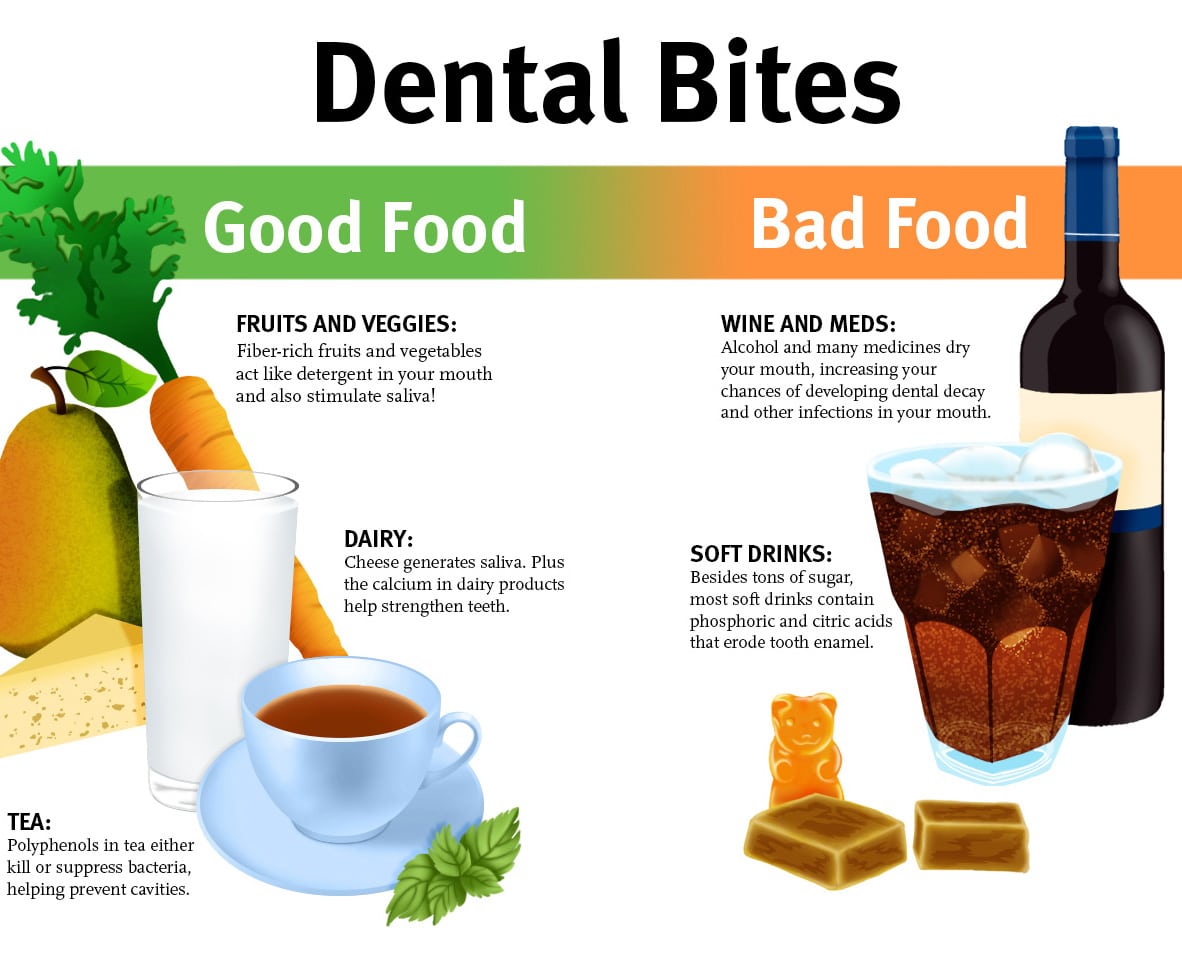 The findings showed that this remedy did improve the condition of the patients to some degree, but more extensive studies are needed to corroborate these positive results. (21)
The findings showed that this remedy did improve the condition of the patients to some degree, but more extensive studies are needed to corroborate these positive results. (21)
The best way to consume cinnamon is by adding it as a spice to your dishes. There are cinnamon supplements available as well, but you must consult your doctor before starting them.
8. Nonstarchy vegetables
Green organic vegetables that contain little to no starch but are loaded with other health-promoting nutrients can help you recover faster from a yeast infection. Some of the most recommended ones are broccoli, cauliflower, spinach, lettuce, asparagus, celery, and parsley.
Yeast tends to thrive in acidic environments, but leafy veggies such as spinach, broccoli, and lettuce help deter that by making your body more alkaline. They also contain high amounts of magnesium and chlorophyll, which help remove toxins from your system. Plus, their rich reserve of iron and vitamins C and B help enhance your energy and immunity levels.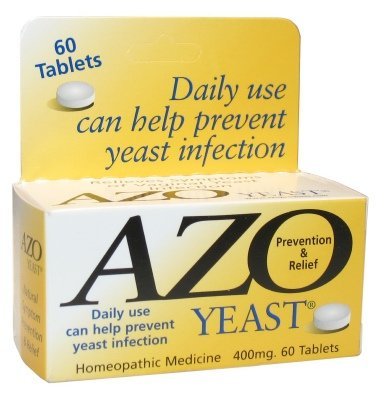
It is best to eat these vegetables raw, steamed, or lightly sautéed as the cooking process can deplete their inherent nutrient value. But there are some cruciferous vegetables such as cauliflower and broccoli that retain their nutrient value even after cooking.
The highlight of all these vegetables is they contain minimal sugar. Yeast cells feed on sugar or carbs to multiply rapidly and trigger an infection. Cutting off their source of sustenance will make it difficult for the fungus to survive or grow. Precisely for this reason, you are expected to eat less starchy vegetables such as potatoes, carrots, beets, and radishes.
The idea is to include these low-carb vegetables in an overall healthy and well-balanced diet. You can add them to your dishes, salads, or even juice them. Research suggests that drinking fermented vegetable juice made with celery, spinach, parsley, lettuce, broccoli, and lettuce might bolster the population of healthy gut bacteria. (22)
9. Green tea
C. albicans need to stick to one another and to the surfaces of the host to proliferate and form a biofilm, which eventually gives rise to an infection. It has been suggested that once an individual pathogen weaves a biofilm, it undergoes changes that make it strong enough to resist the action of antifungal drugs.
albicans need to stick to one another and to the surfaces of the host to proliferate and form a biofilm, which eventually gives rise to an infection. It has been suggested that once an individual pathogen weaves a biofilm, it undergoes changes that make it strong enough to resist the action of antifungal drugs.
This is where green tea can help. It is rich in polyphenols, especially epigallocathechin-3-gallate, that have been shown to destroy about three-fourth of the yeast cell population making up the biofilm.
Yeast cells contain an enzyme called proteasome, which is responsible for eliminating their waste material. The green tea polyphenols impair these enzymes, causing poor waste management within the cells. This hampers the fungi’s ability to multiply and maintain itself, thus inhibiting biofilm formation and reducing infection risk. (23)(24)(25)
10. Oregano
Oregano is an herb replete with active phytochemicals, most notably terpenoid phenols such as thymol and carvacrol, that exhibit considerable antifungal activity.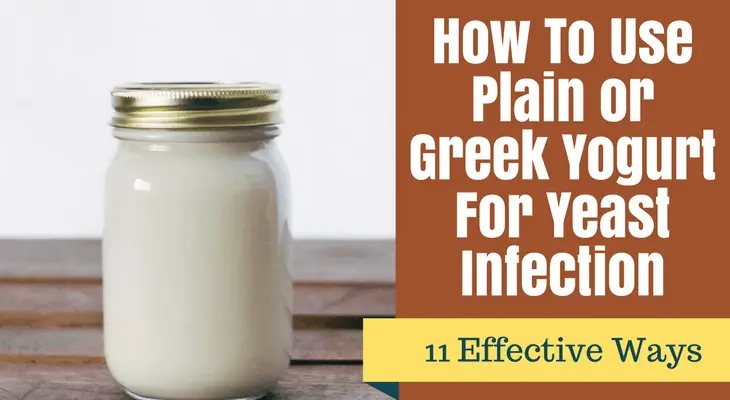 (26)(27) These compounds block the growth of the fungi and prevent them from infecting the host by inhibiting their hyphal formation.
(26)(27) These compounds block the growth of the fungi and prevent them from infecting the host by inhibiting their hyphal formation.
The antifungal effects of oregano have been found to be similar to those of drugs such as nystatin and amphotericin B. Furthermore, studies suggest that oregano extracts may help in combating yeast infections of the mouth such as oral candidiasis. (27)
So far, research on oregano as an antifungal agent has been very promising, but more large-scale and rigorous human trials are needed to establish its efficacy.
Foods to Avoid or Limit
The following foods can increase the risk, duration, or severity of yeast infections, so it’s best to avoid them while you are grappling with the condition.
1. Sugars
Excessive intake of carbs (which ultimately break down into sugars) and processed sugar has been linked with an increased incidence of yeast infections, especially in women. Increased sugar in your system helps create an environment inside the body that is favorable for the growth of yeast.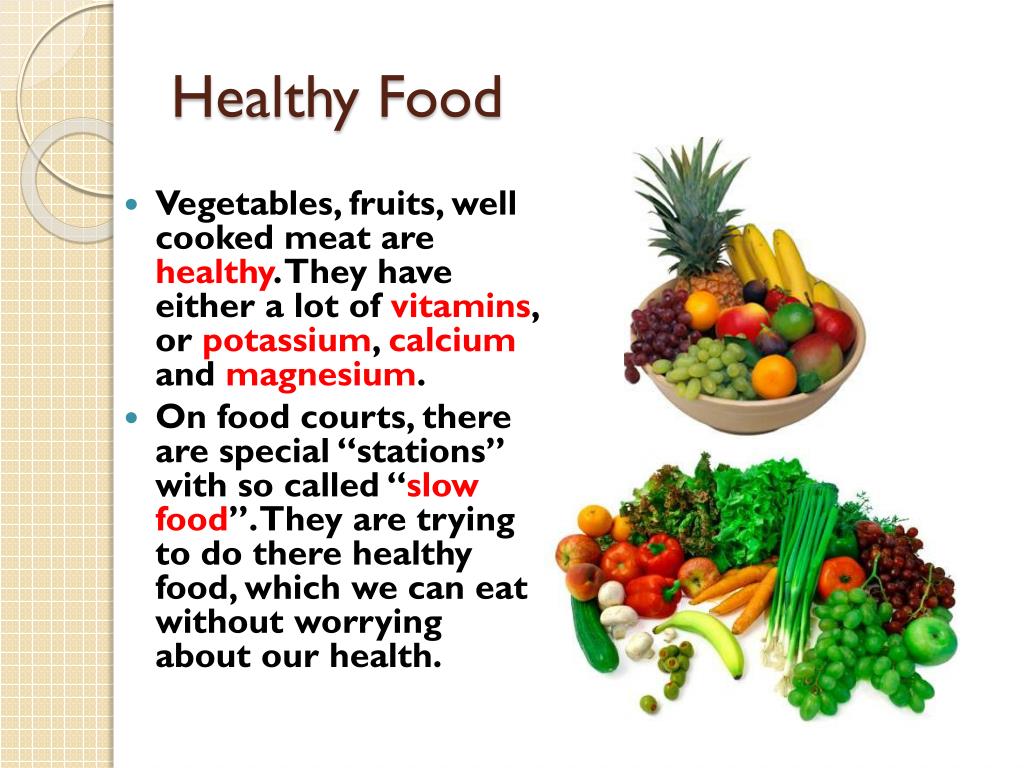
A few healthy dietary modifications can help bring down your sugar consumption considerably. Start by replacing refined grains with whole grains in your daily diet. While whole grains are not devoid of carbohydrates, they also contain a lot of dietary fiber, which makes you feel full quickly, thus reducing your overall intake.
Refined grains, on the other hand, are pure carbs as all their other nutrients are stripped away during processing. It goes without saying that you should avoid desserts, sweetened juices, and sauces and dressings that often contain hidden sugars.
2. Alcohol
Too much alcohol kills the healthy bacteria inside your body, disrupting the gut flora. Healthy bacteria help keep the infection-causing microbes under control, but this imbalance makes the environment more conducive to the growth of yeast.
3. Toxic metals
Some foods contain metals such as mercury, lead, arsenic, and cadmium, which can be harmful and even lethal if consumed in concentrated amounts. One of their toxic effects is an increased susceptibility to yeast infections. Thus, it is important to limit your intake of foods that contain such metals, for instance, mercury-containing fish.
One of their toxic effects is an increased susceptibility to yeast infections. Thus, it is important to limit your intake of foods that contain such metals, for instance, mercury-containing fish.
4. Food additives
Certain foods contain chemicals such as aspartame (artificial sweetener) and MSG (monosodium glutamate) that can harm the body in different ways, including the destruction of the friendly intestinal flora.
The use of hormones and pesticides in food production also contributes to this destruction of the gut microbiome, compromising your overall immunity. The loss of healthy gut bacteria allows yeast cells to overgrow and trigger an infection easily.
Final Word
Contrary to popular belief, fungal infections are not a reflection of personal hygiene. Dirty living conditions or eating habits can make you more vulnerable to this illness, but they are not the sole causes behind it.
In fact, even those who are extremely particular about cleanliness can easily contract yeast infections due to a variety of reasons, an important one being poor food choices that lead to weakened immunity.
So, the importance of healthy eating cannot be stressed enough when it comes to preventing and managing yeast infections. However, the foods mentioned above can’t do much on their own unless combined with an overall healthy diet and lifestyle. Staying active, managing stress, and maintaining a healthy weight will also help your body fight the infection better.
- Was this article helpful?
- YES, THANKS!NOT REALLY
Spread the Love❤️
Advertisements
Advertisements
How it works, research, and food lists
According to some sources, eating and avoiding certain foods can reduce or prevent Candida yeast infections. However, there is a lack of scientific evidence to support this claim.
People following the candida diet limit or avoid certain foods, such as sugar, gluten, alcohol, and some dairy products, that may promote the growth of Candida yeast in the body. The diet also involves eating healthful fats and anti-inflammatory foods.
These recommendations make for a healthful diet for most people. However, research has not yet confirmed the diet’s effectiveness in reducing yeast infections.
In this article, we provide more information about the candida diet, including its effectiveness, its potential benefits, and the foods that people include and avoid when following the diet.
Share on PinterestA person with candidiasis may experience a sore throat.
The genus Candida includes more than 100 different species of yeast that live on the skin and in the mouth, throat, gut, and vagina.
Candidiasis refers to a fungal infection that results from an overgrowth of Candida. It can affect the mouth (oral thrush), throat, esophagus, and vagina (vaginal candidiasis).
Normal concentrations of Candida yeast promote gut health and nutrient absorption and also aid digestion. However, having too much of this yeast in the body or on the skin can lead to infections.
Symptoms of candidiasis of the mouth, throat, or esophagus include:
- white patches on the inside of the mouth
- inflammation and soreness of the throat
- pain while eating or swallowing
- persistent dryness of the mouth
Symptoms of candidiasis of the vagina include:
- itching or soreness of the vagina and vulva
- pain when urinating
- pain during intercourse
- thick, white vaginal discharge that resembles cottage cheese
The candida diet requires people to avoid foods and drinks that could increase the risk of Candida overgrowth.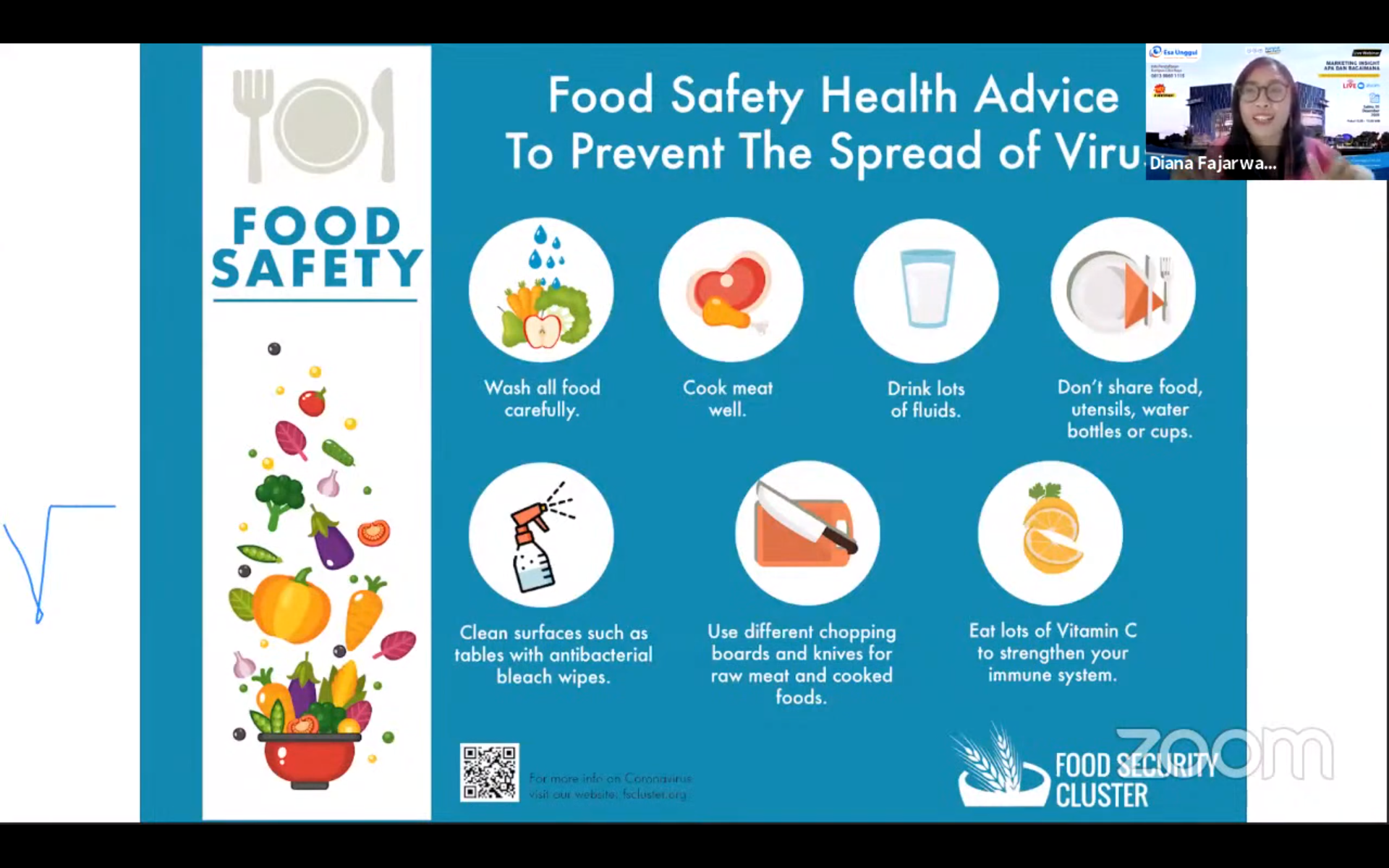 These include gluten, sugar, alcohol products, and certain types of dairy.
These include gluten, sugar, alcohol products, and certain types of dairy.
The diet focuses instead on eating lean proteins, healthful fats, nonstarchy vegetables, and probiotics. The aim of these foods is to help minimize inflammation and balance the concentrations of bacteria inside the gut.
According to the findings of a 2017 laboratory study, higher glucose concentrations may promote Candida growth. The researchers also discovered that foods containing fructose might prevent Candida growth in the mouth.
Theoretically, people may have a lower risk of developing Candida infections if they eliminate foods that contribute to yeast growth. However, current scientific evidence has yet to confirm the diet’s effectiveness.
Share on PinterestMore research is necessary to understand the effects of the candida diet.
Researchers have examined how different dietary substances promote or reduce the growth of Candida in a range of studies in cells and animals. However, they do not know whether similar results would apply to humans.
However, they do not know whether similar results would apply to humans.
Due to the lack of high quality, large-scale human studies, researchers do not know how likely the candida diet is to be effective.
Many factors can affect a person’s risk of developing Candida overgrowth, including recent antibiotic use or having a weakened immune system or certain medical conditions, such as diabetes or kidney failure.
As a result of these multiple factors, it is difficult to predict how dietary changes will affect an individual’s risk.
What does the research say?
Little research has looked directly at the effects of diet on Candida infections. However, the candida diet is healthful overall, so there are few risks to trying it.
Some research supports the idea of replacing sugar with sugar alternatives, such as xylitol. In a 2018 in vitro study, researchers found that xylitol has antimicrobial properties and may help prevent Candida growth in the mouth.:max_bytes(150000):strip_icc()/what-are-the-common-infections-with-diabetes-1087622-V1-78a826e95bcb475b8b381d02b2e98650.jpg)
The findings of another in vitro study suggest that high intakes of sugar allow Candida yeast to bind to cells inside the mouth. However, xylitol produces the opposite effect, making it more difficult for yeast to bind to cells.
The authors of a 2015 review article note that refined sugars and lactose-rich dairy products may promote yeast growth by lowering pH levels in the digestive tract. If this is the case, excluding these foods from the diet may prevent Candida growth. However, more research is necessary to validate this theory.
The candida diet prohibits any form of gluten. The theory is that gluten may harm the intestinal lining and that it may also play a role in contributing to dysbiosis, which is an imbalance in the concentrations of gut microbiota.
Removing gluten from the diet can benefit people with celiac disease or gluten intolerance. However, according to the authors of a 2017 review article, there is no evidence that a gluten free diet provides benefits for people who do not have gluten intolerance.
People who want to follow the candida diet should try incorporating the following types of food into their diet:
- Nonstarchy vegetables, which include broccoli, Brussels sprouts, kale, onions, and tomatoes.
- Low sugar fruits, such as citrus fruits, olives, and berries, but only in moderation.
- Lean proteins, including chicken, eggs, and fish.
- Healthful fats, such as avocado, coconut oil, extra virgin olive oil, and flaxseed oil.
- Fermented foods, for example, sauerkraut, kimchi, and yogurt.
- Gluten free grains, such as quinoa, oat bran, buckwheat, and rice.
- Low mold nuts and seeds, which include almonds, coconut, flaxseed, and sunflower seeds.
- Certain dairy products, such as butter and ghee, and products that contain live active cultures, such as kefir and yogurt.
- Natural sugar free sweeteners, including stevia, monk fruit extract, erythritol, and xylitol.

- Probiotics.
Share on PinterestThe candida diet limits sugar, gluten, and alcohol.
The candida diet strictly prohibits the consumption of sugar, gluten, alcohol, and dairy products that contain high quantities of lactose.
While on the candida diet, people should avoid the following foods:
- Starchy vegetables, such as potatoes, corn, beans, and peas.
- High sugar fruits, which include bananas, mangoes, figs, and raisins.
- Certain meats, such as processed meats and farm-raised fish.
- Grains that contain gluten, including wheat, barley, and rye.
- Dairy products high in lactose, such as milk and soft cheeses.
- Processed fats and oils, for example, canola oil, soybean oil, and margarine.
- Simple sugars and artificial sweeteners, such as sucrose, aspartame, agave, maple syrup, corn syrup, and honey.

- Some types of nut and seed, including peanuts, pecans, pistachios, and cashews.
- Certain drinks, such as caffeinated coffee and tea, sugar sweetened beverages, and alcohol.
Supporters of the candida diet claim that it can lower the risk of yeast infections and prevent gastrointestinal Candida overgrowth.
The diet involves eliminating gluten, sugar, and certain dairy products.
Although laboratory research suggests that these substances may contribute to yeast growth, no substantial evidence exists to support using the candida diet as a treatment for yeast infections.
However, the dietary changes that the candida diet specifies may have beneficial health effects for people with or without a Candida infection.
How to eat properly with thrush
Find out which foods to include in the diet and which to reduce in order to speed up recovery from thrush
During treatment for candidiasis, the doctor will definitely give you recommendations regarding the diet that you should follow during the entire course of treatment .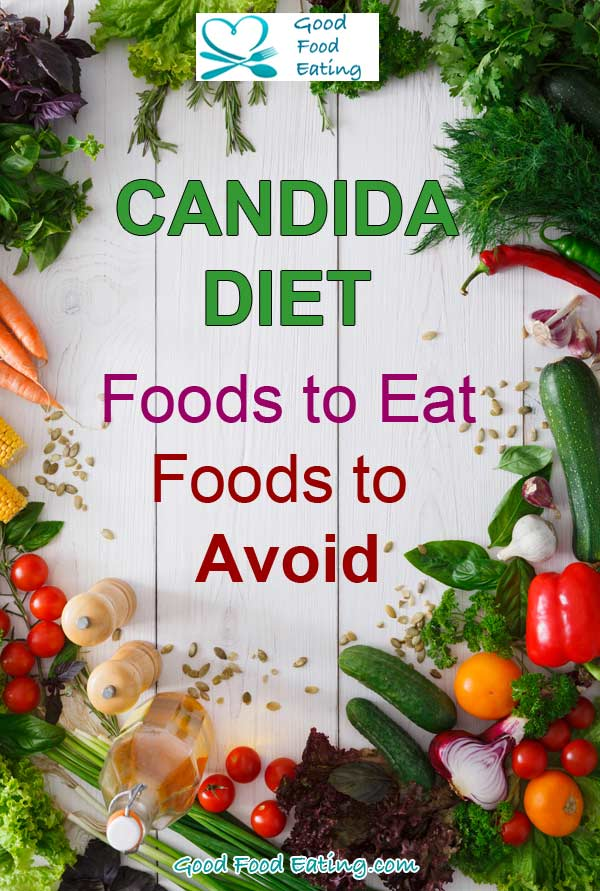
Diet food for thrush, first of all, should be enriched with products that have an antifungal effect. On the other hand, it is necessary to stimulate the immune system, and, accordingly, eat immunostimulant foods. An ideal candidate that satisfies both of the above positions is garlic. Garlic is effective both during treatment for candidiasis and for the prevention of thrush. Its antifungal properties have been confirmed by Israeli scientists, who have shown that garlic extract inhibits the growth of fungal culture.
Read also: Garlic will help avoid food poisoning
On the other hand, you need to replenish the body with natural competitors of fungi – bacteria. Therefore, in the treatment of thrush, the use of yogurts with live cultures of beneficial bacteria is very effective. However, avoid sugary yogurts. The sugar contained in them only contributes to the growth of the fungal flora. Some studies show that regular consumption of fermented milk products with beneficial bacterial cultures reduces the risk of developing thrush by 35-40%!
What can and should be consumed?
- All vegetables and unsweetened fruits.
 It is desirable to eat everything raw, but cooking, stewing or baking is allowed. Doctors do not recommend frying on an open fire.
It is desirable to eat everything raw, but cooking, stewing or baking is allowed. Doctors do not recommend frying on an open fire. - Lean meats, poultry and fish can also be used for thrush.
- Cereals and stale bread, preferably coarsely ground and low in refined carbohydrates.
- All legumes.
- Spices. Spices fight well with fungal cultures.
- Vitamin preparations. They increase the resistance of the body and increase immunity.
Read also: We strengthen immunity: Preparing a vitamin mixture
What to exclude from the diet?
- All foods containing sugar and the following simple carbohydrates: fructose, galactose, maltose, glycogen, sorbitol, monosaccharides, glucose, sucrose. Of course, you will not be able to completely avoid such components, so reduce their consumption to a minimum.
- Fruit juices and sweet fruits: grapes, dried fruits and others.
- Products containing yeast: beer, bread and other bakery products.

- Vinegar and alcohol.
- Sauces: ketchup, mayonnaise, mustard, soy sauce.
- Smoked products.
Recall that thrush is a type of fungal infection, the causative agent of which is a yeast-like fungus of the genus Candida . Therefore, in the medical literature, thrush is known as candidiasis. Candida is an opportunistic fungus. They are an integral part of the normal microflora of the oral cavity, large intestine and vagina in most healthy people.
Thrush occurs when fungi multiply in very large numbers, or infection occurs with another, more pathogenic strain.
As a rule, thrush develops with a decrease in immunity, or as a result of antibiotic therapy. Also, the trigger factor for the disease can be menopause, wearing narrow (tight) and uncomfortable underwear, pregnancy, or the use of contraceptives.
Read also: Proper underwear will protect a woman from thrush
Typical symptoms of candidiasis are itching, pain, burning sensation, white cheesy discharge on the mucous membranes (in the vagina, on the tongue). And in men, this is reddening of the foreskin and a white coating.
And in men, this is reddening of the foreskin and a white coating.
Experts note that women often mistake any vaginal discharge for candidiasis, despite the fact that this disease is rare. – A true diagnosis can only be established with the help of laboratory tests.
Thrush can now be effectively managed with antifungal medicines. However, self-medication is not worth it. Gynecologists emphasize that it is very difficult to treat patients who have self-medicated. If a drug has helped your friend, this does not mean that it will suit you.
Read Ivona.ua in Google News
Thrush: the first symptoms and prevention of candidiasis
Contents:
- Causes of thrush
- Types of thrush
- Symptoms of thrush
- Diagnosis of vaginal candidiasis
- Diet for thrush
- Treatment of thrush in women
- Prophylaxis after treatment
Thrush is a common household name for the uncontrolled growth of fungi that affects the mucous membranes.
Fungi of the genus Candida are normally present on the mucous membranes, but they begin to multiply intensively only under certain conditions, causing inflammation.
For effective treatment and a quick recovery, it is necessary to know why the disease occurs, what are its symptoms and methods of treatment.
What is thrush
A more correct name for thrush is vaginal candidiasis. Fungi of the genus Candida are the so-called conditionally pathogenic flora, when their number changes, specific unpleasant symptoms occur.
It is customary to distinguish two forms of the disease:
- acute, with pronounced symptoms of inflammation;
- chronic, in which the manifestations of the disease periodically disappear, but then reappear.
The treatment of each form has its own characteristics.
Causes of thrush development
The disease develops when there are several provoking causes at once, leading to a decrease in the amount of beneficial flora on the mucous membranes, with a simultaneous increase in the amount of pathological flora. Here are just a few of the causes of vaginal candidiasis:
Here are just a few of the causes of vaginal candidiasis:
- Long-term use of drugs, especially antibiotics, without proper flora control.
- Reduced immunity.
- Sharp fluctuations in hormonal levels.
- Problems with metabolism.
- Chronic diseases and pathological processes of various nature.
Thrush often develops in diseases and pathologies such as diabetes mellitus, liver cirrhosis, obesity, anorexia, tonsillitis, hormone therapy. It often occurs during pregnancy.
It is necessary to note the external causes of microflora disturbance and, as a result, inflammation:
- insufficient hygiene of the genital organs;
- rare change of tampons and pads;
- permanent wearing of synthetic underwear;
- the use of hygiene products with fragrances and deodorizing effect.
An increase in the amount of carbohydrates in the diet is also a factor that unambiguously provokes candidiasis. This factor can lead to a violation of the microflora not only in an adult woman, but also in an infant.
This factor can lead to a violation of the microflora not only in an adult woman, but also in an infant.
Newborns are often infected during the passage of the birth canal, and then the disease progresses when the immune system is weakened.
Knowing the causes of candidiasis, it is easier to take preventive measures to prevent the development of the disease.
Types of thrush
The uncontrolled growth of the fungus can start on any part of the body. With damage to the mucous membranes, skin and nails, a superficial form develops, with damage to internal organs – a systemic one. Sometimes the fungus affects the entire body with the development of an extremely severe form of the disease – candidal sepsis. The form of candidiasis can be acute, chronic congenital. Each has its own manifestations, but all are dangerous on contact: thrush is contagious.
Carriage is also noted, when the patient himself has no manifestations of the disease. However, the person in contact with it can also become infected.
- When carried on the mucous membranes of the genital organs and oral cavity, a large amount of pathogenic flora is detected, despite the fact that there are no signs of inflammation.
- The acute form has bright symptoms. It is considered the initial manifestation of the disease, and it is she who can be treated more easily. At the same time, with proper therapy, it does not cause complications.
- Chronic is characterized by a long relapsing course and almost does not respond to drug therapy. Clinical symptoms are not pronounced, but the amount of pathological flora is large, as the test results show. More common in women.
- The congenital form is detected in young children. Symptoms depend on the degree of infection, and range from small localized lesions to fungal sepsis. It is rare, but the possibility cannot be ruled out.
Separately, to highlight the recurrent and persistent forms of chronic thrush.
In the first case, exacerbations of the disease regularly occur with a characteristic picture of inflammation. And with the second, the disease becomes sluggish, exacerbations are rare and are always associated with certain causes, for example, they occur 1-2 days before the onset of menstruation.
And with the second, the disease becomes sluggish, exacerbations are rare and are always associated with certain causes, for example, they occur 1-2 days before the onset of menstruation.
Localization of inflammation may be different. Skin, nails, mucous membranes, internal organs are affected. Most often, inflammation is noted on the genitals, the spaces between the fingers, follicles are also often inflamed. Often there are so-called diaper and dressing candidiasis.
Mucosal lesions can also be localized anywhere: in the esophagus, stomach, vagina, glans penis, in the oral cavity.
Sometimes patients do not associate their condition with the symptoms of thrush, although it is caused by fungi of the genus Candida. Such atypical inflammation occurs in the corners of the mouth, on the red border of the lips, in the pharynx.
Fungal lesions of the ears, meninges, bladder, kidneys, and lungs are less common.
Thrush symptoms
The first characteristic symptom of a disease affecting the genitals is itching. Following him, other symptoms appear:
Following him, other symptoms appear:
- Hyperemia of the mucous membrane. Detected during a gynecological examination.
- Thrush pain occurs at the time of sexual intercourse or hygiene procedures. There may be discomfort when urinating.
- Puffiness is especially pronounced in advanced pathology.
- Thrush discharge white, cheesy.
Sometimes the clinical manifestations are erased. For example, the patient is only concerned about itching and slightly larger than usual discharge. Sometimes these symptoms are accompanied by a “sour” smell. With a persistent form, unpleasant symptoms may be absent almost completely.
If you do not pay attention to the first symptoms and do not start complex treatment, the disease will turn into a chronic form, which will not be easy to cure. To prevent this, when the above symptoms appear, you need to visit a gynecologist at the Bibirevo Central Clinic, who will prescribe treatment and advise on preventive measures.
In newborns, thrush often appears in the mouth, affecting the tongue, or the entire mucous membrane. A white curdled coating appears. If it is removed, areas of swelling and redness are found under it. The child becomes capricious, sleeps badly, refuses to eat.
Diagnosis of vaginal candidiasis
Usually the disease is easily diagnosed, since its manifestations are very characteristic. It does not follow from this that a woman in the event of such symptoms can self-medicate. It should always be taken into account that there are a number of serious diseases, the symptoms of which at a certain stage are similar to candidiasis.
You should definitely visit a gynecologist. During the examination, he will detect both pathological discharge and swelling of the mucosa. If a woman is concerned about thrush in a chronic form, she should go to the doctor during an exacerbation, when the clinical manifestations are most pronounced.
The doctor will definitely prescribe tests – smears.
In addition to the smear, prescribe:
- Sowing to determine the type of fungus.
- ELISA for the detection of antibodies.
- PCR, which determines the DNA of the infection.
Analyzing the test results, you can find out the form of the pathological process and the ratio of fungi of the genus Candida with other microorganisms.
If a woman has previously been diagnosed with thrush, it is not recommended to reuse the same drugs that she was previously prescribed. Fungi are insidious in that they quickly adapt to drugs, and the next time the therapy will not give the desired effect. It is this fact that often leads to the fact that a woman comes to the doctor when the clinical picture is already pronounced.
Thrush localized on the vaginal mucosa is the most common form of the disease: almost every woman encounters it during her life. But, nevertheless, there are no fewer questions, just like the myths associated with it.
There are some things you should definitely know about:
- You can have sex with thrush, but only with a condom. At the same time, itching and discomfort are unlikely to bring pleasure.
- It is believed that one tablet can cure frequent thrush. But this method helps only with the initial form of pathology. In other cases, treatment is complex and lengthy.
- Often the question arises whether thrush is treated with fermented milk products. No, this method is inefficient.
- Before menstruation, an exacerbation of the disease often occurs due to a change in hormonal levels and a decrease in immunity.
- Inflammation can occur against the background of severe stress, which is also due to a decrease in immunity.
Diet for thrush
Despite the fact that the inflammatory process occurs in the genitals. One of the treatments is diet.
It is necessary to reduce the amount of simple carbohydrates in food, that is, limit confectionery, sugar, and foods that contain a lot of starch.
Diet restrictions are prescribed for three months.
It is recommended to reduce the amount of spices, food colorings, products containing yeast, as well as coffee, tea, and carbonated drinks along with simple carbohydrates.
It should be noted that alcohol often provokes thrush. Therefore, its use should be completely abandoned.
Treatment of thrush in women
The disease itself and its consequences do not pose a direct threat to the general health of a woman, but a doctor should be consulted already at the first symptoms of the disease. Such unpleasant sensations as itching and burning reduce the quality of life in general and cause severe psychological discomfort.
If the initial stage is treated quickly and does not cause relapses after, the chronic form is more difficult to treat.
Methods of treatment are determined by the severity of the disease. If the disease is at an early stage, with a timely visit to the doctor, local remedies can be dispensed with. The doctor will prescribe antifungal suppositories and ointments. In more complex cases, they will be supplemented by tablets for internal use. After the end of the course, you will need to retake a smear.
The doctor will prescribe antifungal suppositories and ointments. In more complex cases, they will be supplemented by tablets for internal use. After the end of the course, you will need to retake a smear.
In the chronic form, simply eliminating the fungus will not be enough, it is necessary to take measures to normalize the microflora. They include:
- Therapy to eliminate intestinal dysbiosis.
- Preparations for enhancing immunity.
- Strict hygiene.
- Refusal of antibacterial agents.
- Magnetic therapy, electrophoresis and darsonval give an excellent effect.
In the treatment of pregnant women, drugs are chosen with particular care. As a rule, only local funds are assigned. What kind of ointments and suppositories to prescribe in a particular case, the gynecologist decides.
Post-treatment prophylaxis
When prescribing a course of treatment, the doctor will tell you how long to continue it, how long the inflammation takes, and how to prevent a relapse.

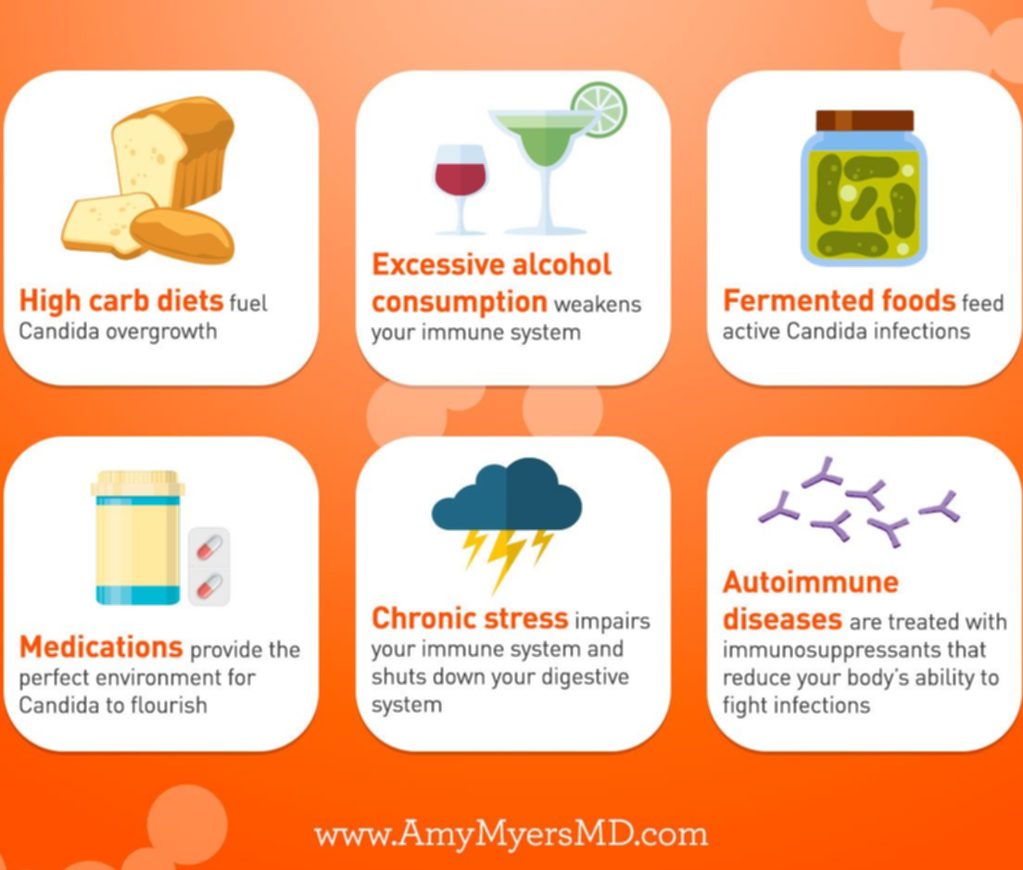
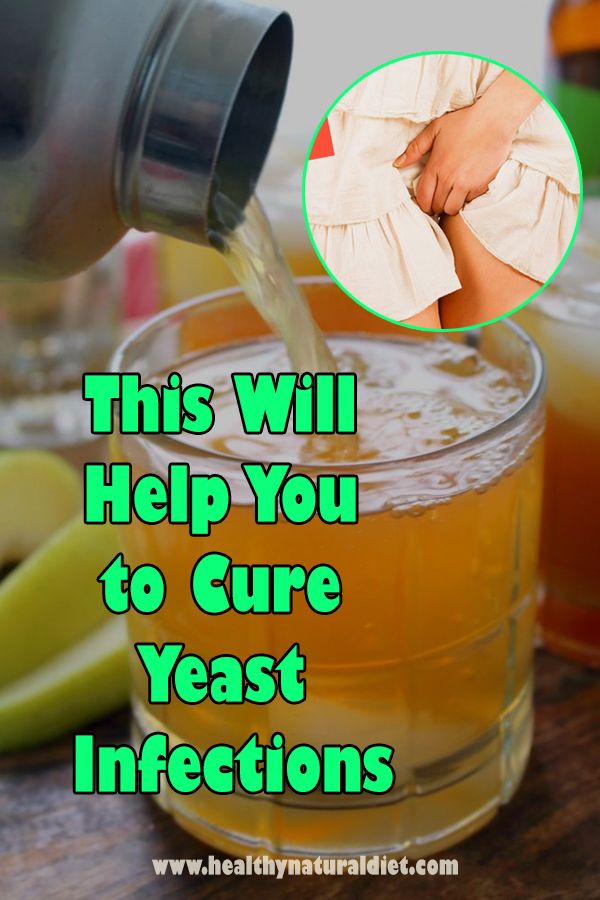
 It is desirable to eat everything raw, but cooking, stewing or baking is allowed. Doctors do not recommend frying on an open fire.
It is desirable to eat everything raw, but cooking, stewing or baking is allowed. Doctors do not recommend frying on an open fire.